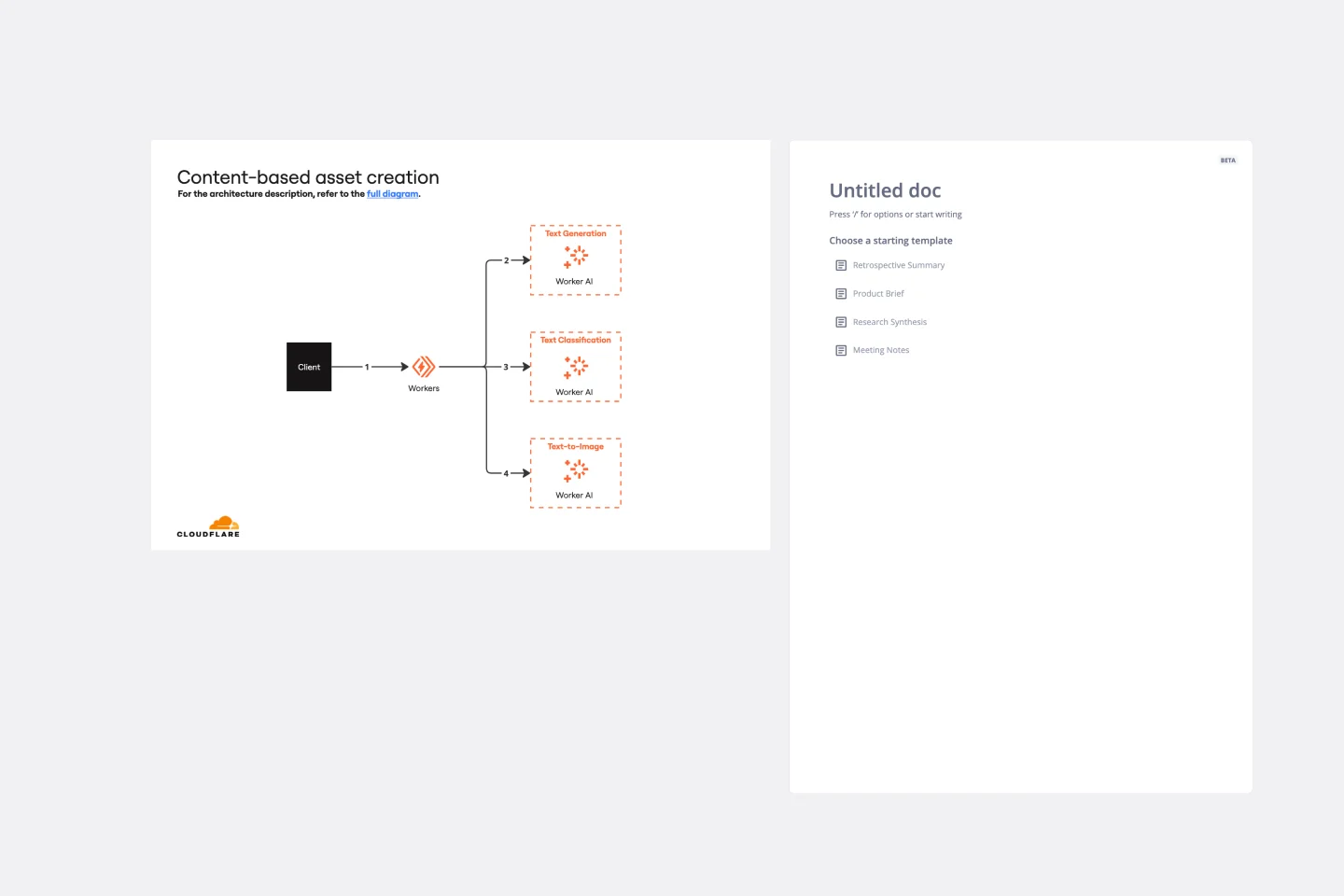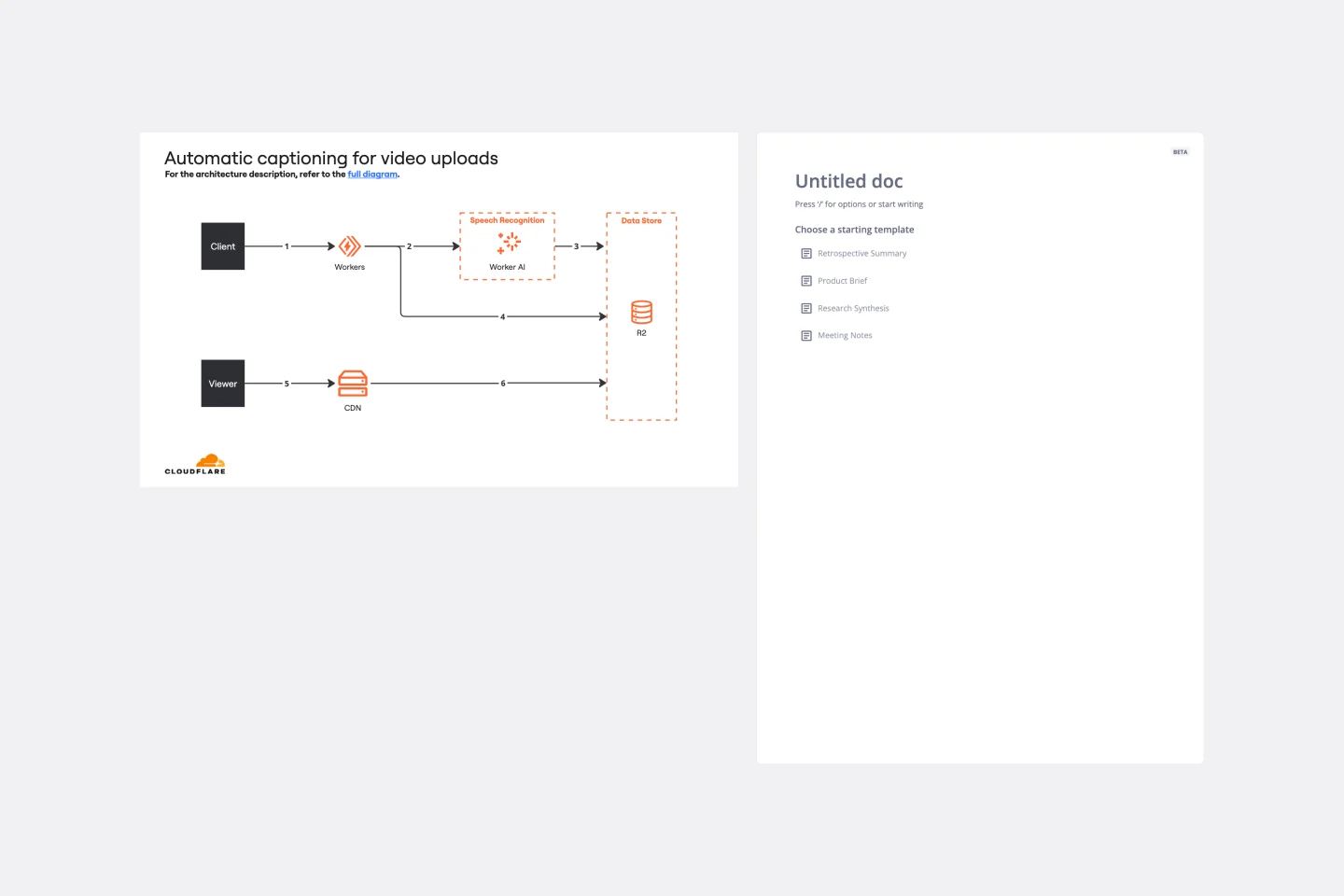About the Cloudflare RAG Architecture Knowledge Seeding Template
The Cloudflare RAG Architecture Knowledge Seeding template in Miro is designed to facilitate the sharing and visualization of cloud architecture knowledge within teams and organizations. This template is especially beneficial for those involved in cloud infrastructure optimization, network and cloud solutions, and creating cloud architecture diagrams. It offers a structured method for documenting and disseminating essential architectural insights, ensuring all team members can access comprehensive and current information.
How to use the Cloudflare RAG Architecture Knowledge Seeding Template in Miro
Customize the template: Customize the template to fit your specific project or organizational needs. You can modify elements within the template to accurately reflect your cloud architecture.
Add your content: Begin populating the template with your cloud architecture knowledge, including diagrams, network configurations, cloud infrastructure optimizations, and any other pertinent information.
Collaborate and share: Invite your team members to collaborate on the board. Miro's interactive features allow for real-time editing, commenting, and feedback. Once your architecture knowledge is thoroughly documented, share the board with stakeholders and team members to ensure everyone is informed.
Why use the Cloudflare RAG Architecture Knowledge Seeding Template
Streamlined knowledge sharing: This template simplifies the process of sharing complex cloud architecture knowledge, making it accessible to all team members, regardless of their technical expertise.
Enhanced collaboration: The template provides a centralized platform for documenting cloud architecture, promoting collaboration among team members, and encouraging the exchange of ideas and best practices.
Up-to-date information: Miro boards' dynamic nature means that all documented knowledge is easily updatable, helping teams maintain an accurate and current view of their cloud architecture.
Visual learning: Leveraging Miro's powerful diagramming and visualization tools, the template makes it easier for teams to understand complex architectural concepts visually.




